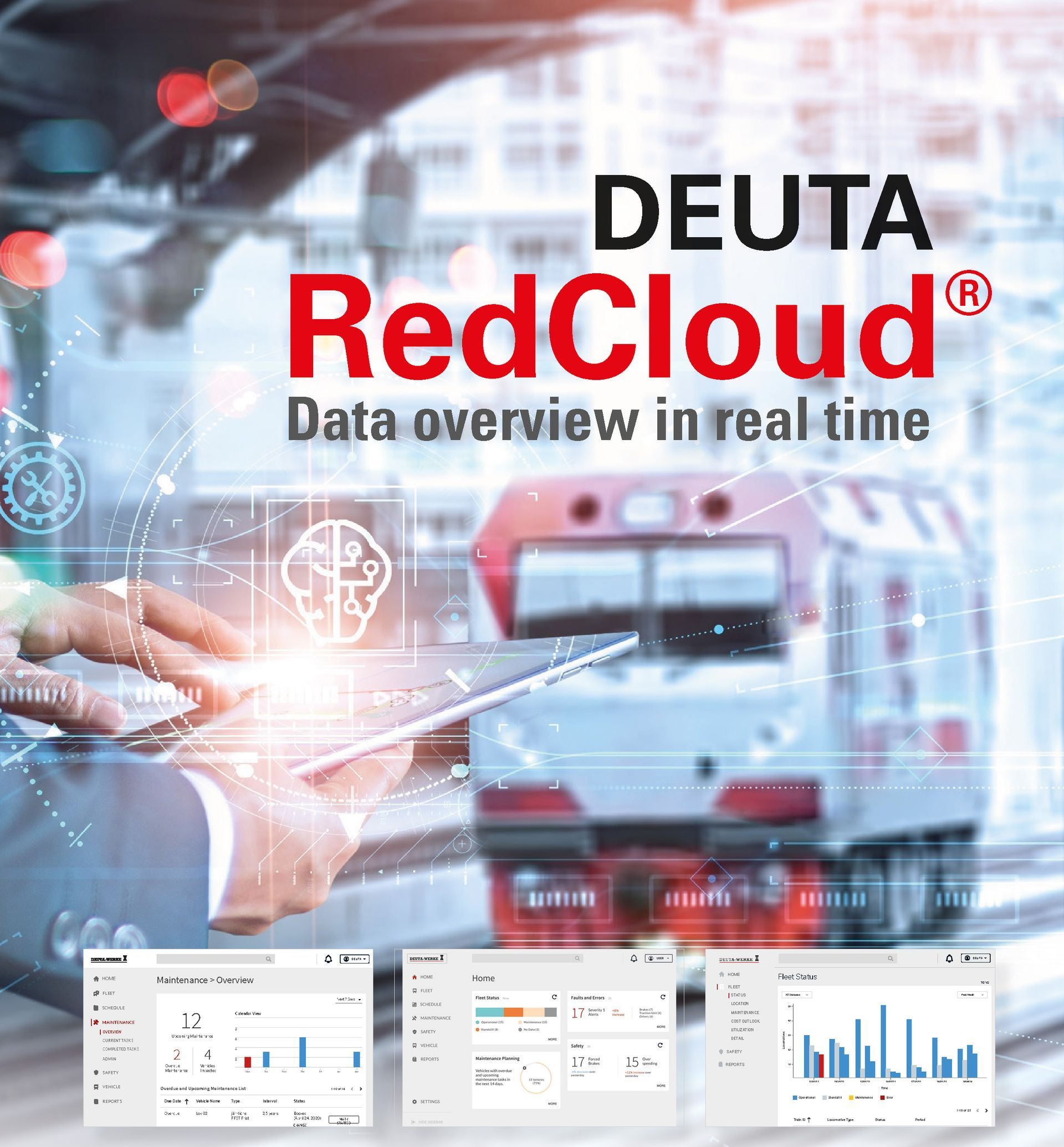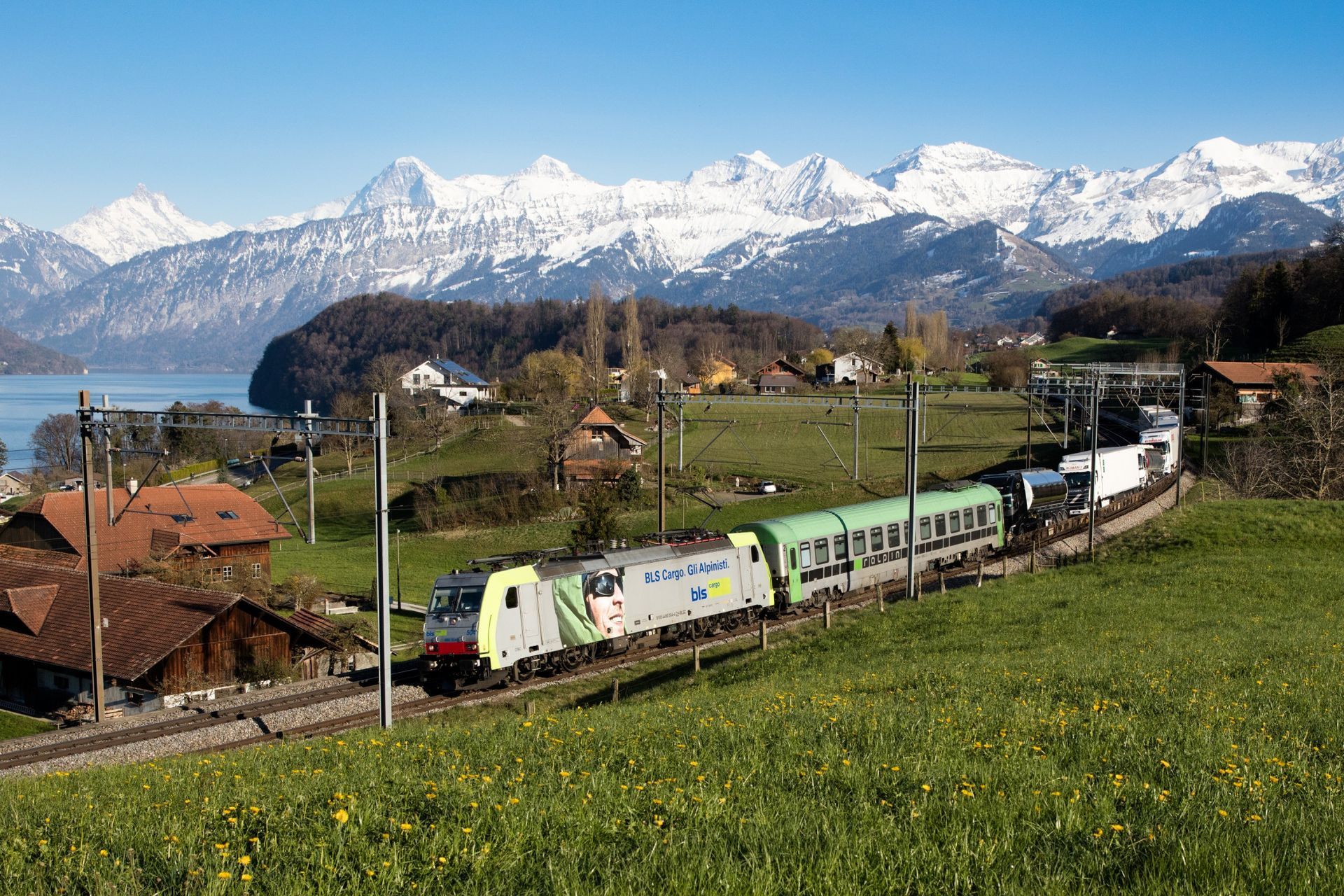BtoB IoT & AI In Mobility
Mag Articles
DEUTA Head-Up Display with IconTrust® DMI safety
Railways are still safest mode of ground transportion and at the same time an essential backbone of local public transport. This is due in no small part to the responsible and reliable work of train drivers, who carry hundreds of passengers in each vehicle. A train driver‘s job requires full concentration and a high level of alertness, as traffic density is constantly increasing.
This year DEUTA celebrates its 15th IconTrust anniversary and we took the opportunity to ask Dr. Rudolf Ganz, Technical CEO at DEUTA 5 questions
Dr. Rudolf Ganz started his career 1999 at DEUTA. As technical CEO he is responsible for R&D, World Wide Sales, Quality, After Sales Service & Repair and Project- and Program Management.
DEUTA RedCloud® - Data overview in real time
DEUTA RedCloud® DEUTA RedCloud® is a cloud-based software solution for real time acquisition, processing and analysis of event recorder and sensor data, improving efficiency of railway operations, proving compliance and supporting maintenance activities. Our approach We use Lean Product development with human-centred Design Thinking to develop our solution.
The Promise of 5G for Transport and Mobility
The transportation and mobility industries are on the cusp of a major revolution. Applications such as autonomous vehicles, dynamic, demand-led real-time traffic management using ‘vehicle to anything’ (V2X) technology and high-resolution video/CCTV linked to AI systems to improve compliance, safety and convenience via smart transportation infrastructure have all been spoken about for many years. Initially these were in the realm of science fiction, then discussed as conceptual ‘art of the possible’ technology topics, and now, finally, as realistic aspirations to be implemented in the near future.
Nexxiot Launches Vector: New Sensor Delivers Precision Control for Rail Safety and Asset Intelligence
Over the past few years, the rail sector has made huge strides forward. Digitalization is transforming operations and delivering a new standard of accountability and trust. Big Data generated through the deployment of sensors and delivered via mobile connectivity are opening new opportunities in safety, maintenance, and cargo owner services.
Dan MacGregor, Nexxiot Co-Founder explores these opportunities and explains how the newly released Vector sensor, used to monitor brakes, hatches, and doors on railcars, is a game changer for the industry.
The Impact OF AI and IoT on the Future of Transportation
The rise of the Internet of Things (IoT) and Artificial Intelligence (AI) has significantly transformed the way we live, work, and travel. The transportation sector has seen some of the most significant changes, with IoT and AI playing a crucial role in mobility. From self-driving cars to real-time traffic monitoring, IoT and AI technologies are revolutionizing transportation in ways we could never have imagined. IoT and AI technologies are converging to create a smart mobility ecosystem that will shape the future of transportation.
BrainCreators - Maintenance is a global problem
As one of the fastest-growing countries in the world, the United Arab Emirates (UAE) has experienced massive infrastructural development over the last few decades. This development has been most evident in its road network, which has undergone a significant expansion, resulting in over 25,000km of roads in the Emirate of Abu Dhabi alone. The quality of these roads is also exceptional, with Abu Dhabi’s road network ranking number one worldwide when it comes to road condition. Despite this impressive development, there are still challenges that the UAE faces when it comes to road maintenance.
Trains with Brains The future of global rail asset monitoring
Transmission Dynamics are a UK based, multi-award winning, global innovator and Industrial Internet of Things (IIoT) solutions provider, specialising in remote condition monitoring of high value assets. They have designed and deployed a range of proprietary technologies over the last two decades and these are now being utilised to monitor rail infrastructure using train borne sensor technology throughout the global rail industry.
Railnova - Integrating AI-based automatic translation of maintenance reports to ease international fleet management
BLS Cargo, a Swiss-based rail freight provider specialising in trans-alpine transports, has a presence in Switzerland, Italy, Germany and Belgium. They quickly took notice of this challenge. BLS Cargo is keen to stay on top of technology, and pushing their reliability forward is one of their trademarks. To work on the efficiency of key information transmission between drivers, BLS Cargo deployed a digital logbook and a digital corrective event notification based on Railnova software. However, it became clear that a translation feature was necessary for added effectiveness.
Yumain: Pantograph Condition Monitoring System for the Railway Industry
Yumain introduces an intelligent device that processes and analyses the state of the pantograph in real time and sends an alert when a fault is detected. This embedded AI sets a new standard for predictive maintenance and guarantees the end of catenary tearing incidents.
Introducing Next-Generation Train Travel: Attensys Train Informer
The Attensys Train Informer utilizes advanced sensors installed in the seats of trains plus video analytics that can detect whether or not a seat is occupied – and with what. These cutting-edge sensors, the latest in seat occupancy detection, are able to tell a person from an object and transmit data to a central system that can provide real-time information to passengers and train operators about the available seats on the train. With this technology, passengers can easily identify the comfortable spot to sit during their journey.
CLEARSY is enhancing its portfolio with a cyber-secure gateway to safety-critical systems
This innovative work ensures that the operating system executed on the gateway will always behave as expected whatever incoming packets are received on the network link. Thanks to this architecture the cybersecurity gateway is acting as a firewall and thus isolating the CLEARSY Safety Platform (vital-computer) from external threat.
Europe's Rail Research and Innovation Keeps AI on the Right Track
Artificial intelligence (AI) could prove to be nothing short of a gamechanger for the rail industry. Not only does it have the potential to optimise complex railway systems, improve the safety and security of urban rail networks, and enhance the customer experience, it can also help manage capacity and lifecycle costs, streamline maintenance activities, and reduce the risk of errors – all while bringing a high-level of automation to rail operations.













